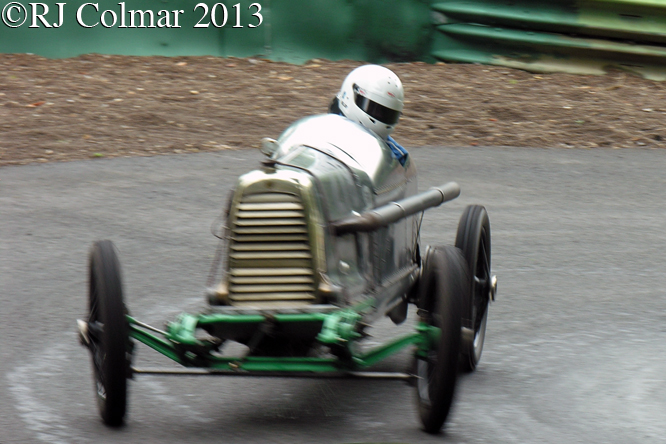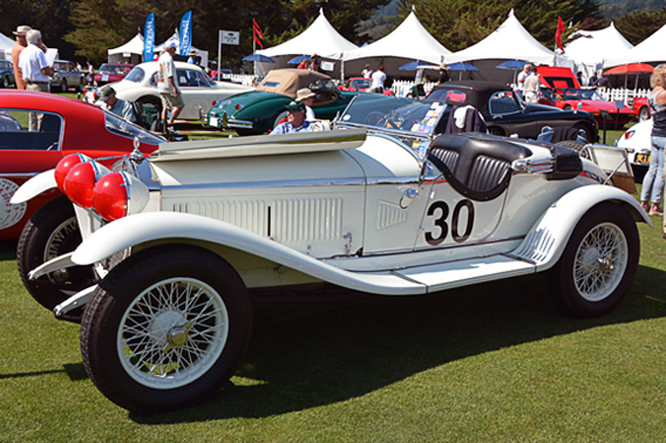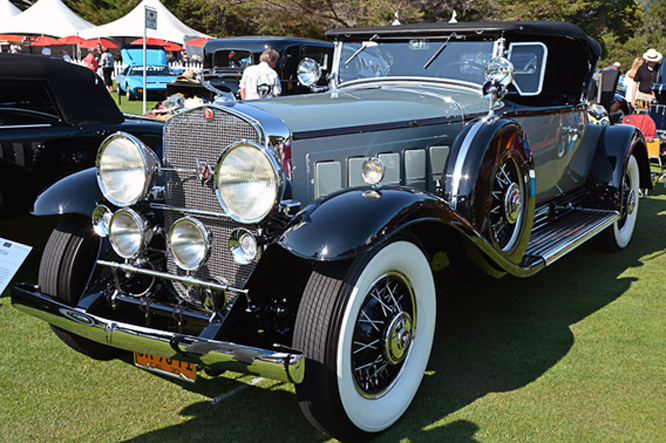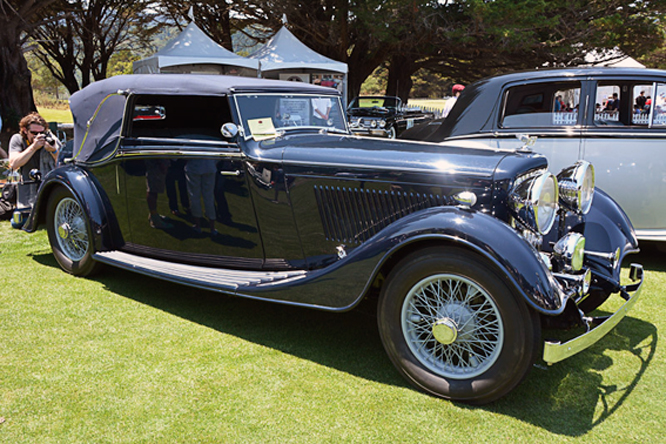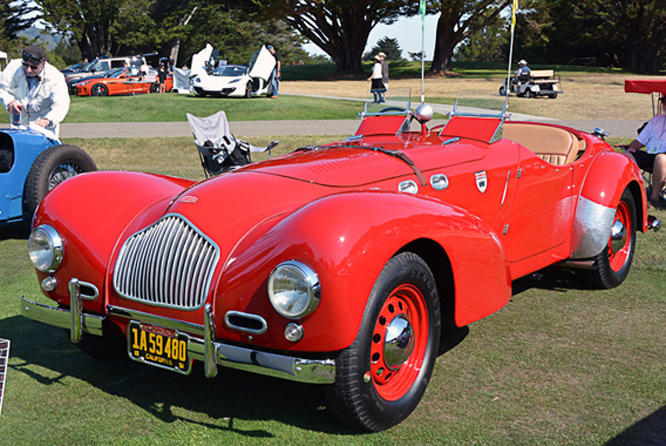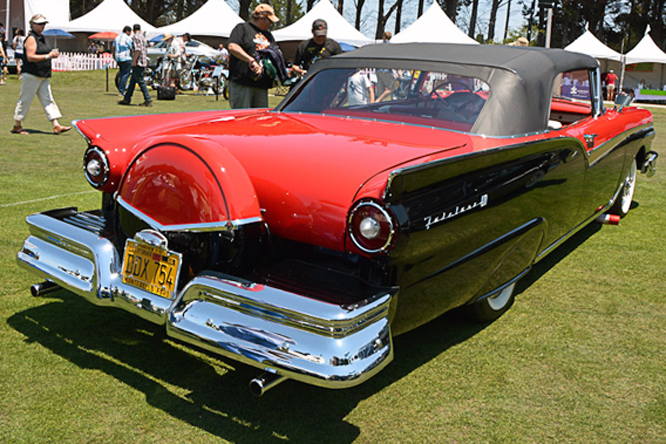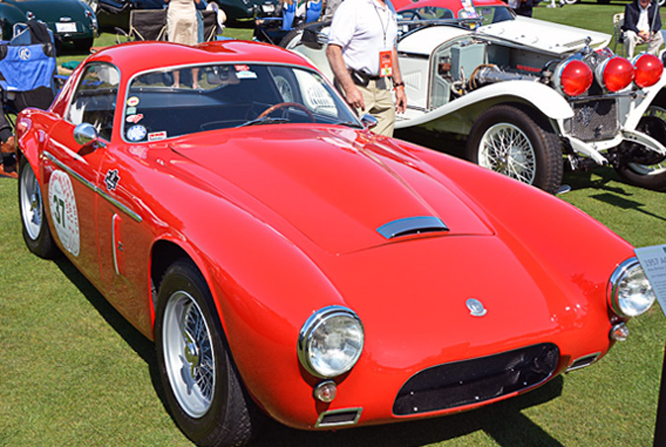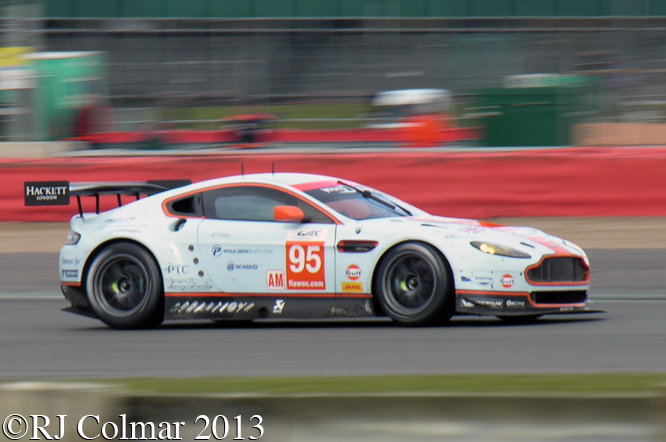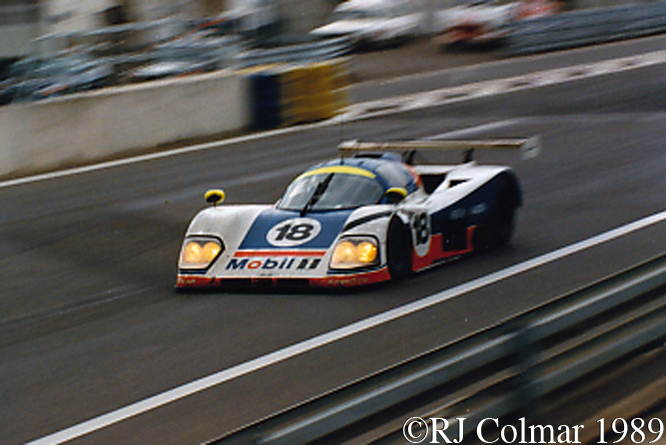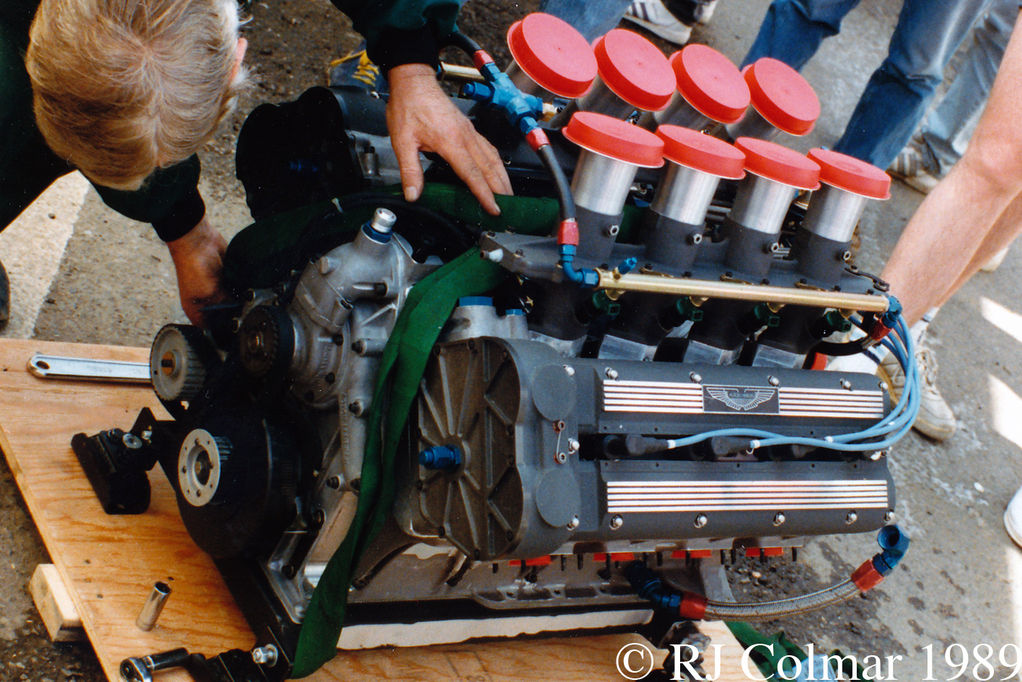On Friday I had a look at some of the Great Ferrari’s at The Quail Concours d’Elegance, some of the other vehicles present are featured today.

Towards the end of last year I looked at one of a matching pair of matching Rolls Royce Boattail Speedsters by Gary L Wales, Gary is seen above right standing next to one of his latest Retro Design creations La Bestioni Beast a 1919 LaFrance Speedster.

Going straight to the top 3 museums to visit in the USA is the Simeone Automotive Museum in Philadelphia who own this Bugatti T57G the car driven by Jean-Pierre Wimille and Robert Benoist to victory by 7 laps at Le Mans in 1937.

The 1948 Lincoln Continental like the Cabriolet above was the last US production model ever built with a V12 motor.

On the May 30th 1949 the bubble top on this prototype Jaguar XK 120 was bolted over the head of Norman Dewis who proceeded to record a two way timed average run of 132.6 mph on an empty stretch of motorway twixt Ostend and Jabbeke in Belgium.

The Aston Martin DB2 Coupé above was originally sold as a right hand drive vehicle to a Swedish customer Sölve Relve in 1951, it has also belonged to Swedish racing driver Sture Nottorp. In 1960 Yngve Eriksson bought the car and had the body work face lifted with a larger grill, fared headlights larger rear window and had the steering moved from the right to the left.

Of all the cars featured today the story of the 1953 Bosley GT is perhaps the most remarkable of all, aged just 21 Robert Bosley a horticultural farmer from Mentor Ohio, was dissatisfied with his XK 120 and Oldsmobile Rocket 88 and so he set out to build a dream machine in 1952. Robert had no design experience and taught himself self how to build the car including the fibre glass body as he went along using auto parts that dated back to the 1930’s. The motor he chose was a six carb Chrysler Hemi which gave the striking unique car a claimed top speed of 160 mph !
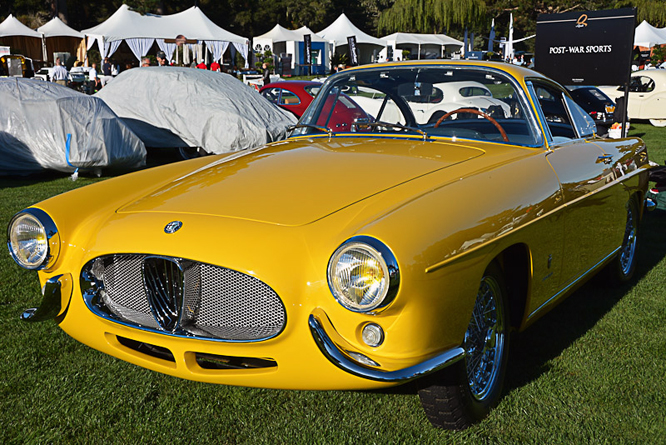
So far as I have been able to discern the Alfa Romeo above is ‘the’ unique 1953 1900C SS Coupé with coachwork by GHIA, if you know different please do not hesitate to chime in below or on the GALPOT FB page.
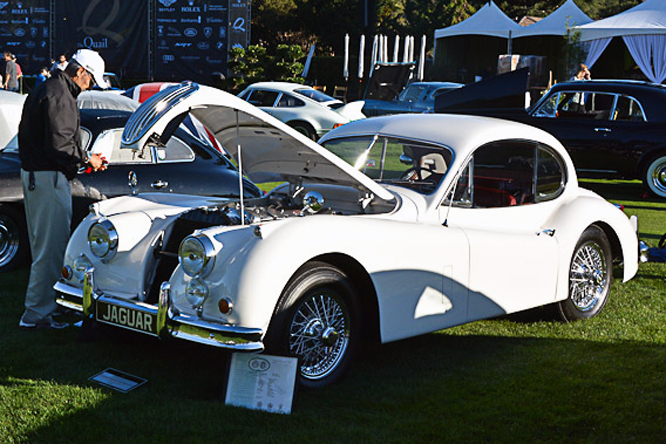
GALPOT contributor Geoffrey Horton’s immaculate 1955 Jaguar XK 140 FHC SE/MC is seen above keeping some exotic company.

The Chevron B16 above appears to have been built in 1970, no other information is available on the car which appears to have been withdrawn from the Bonham’s Auction, if you know why please do not hesitate to chime in below.
My thanks to Geoffrey Horton for taking and sharing today’s photographs.
Thanks for joining me on this “A Motorsports Gathering” edition of “Gettin’ a li’l psycho on tyres”, I hope you will join me again tomorrow. Don’t forget to come back now !







